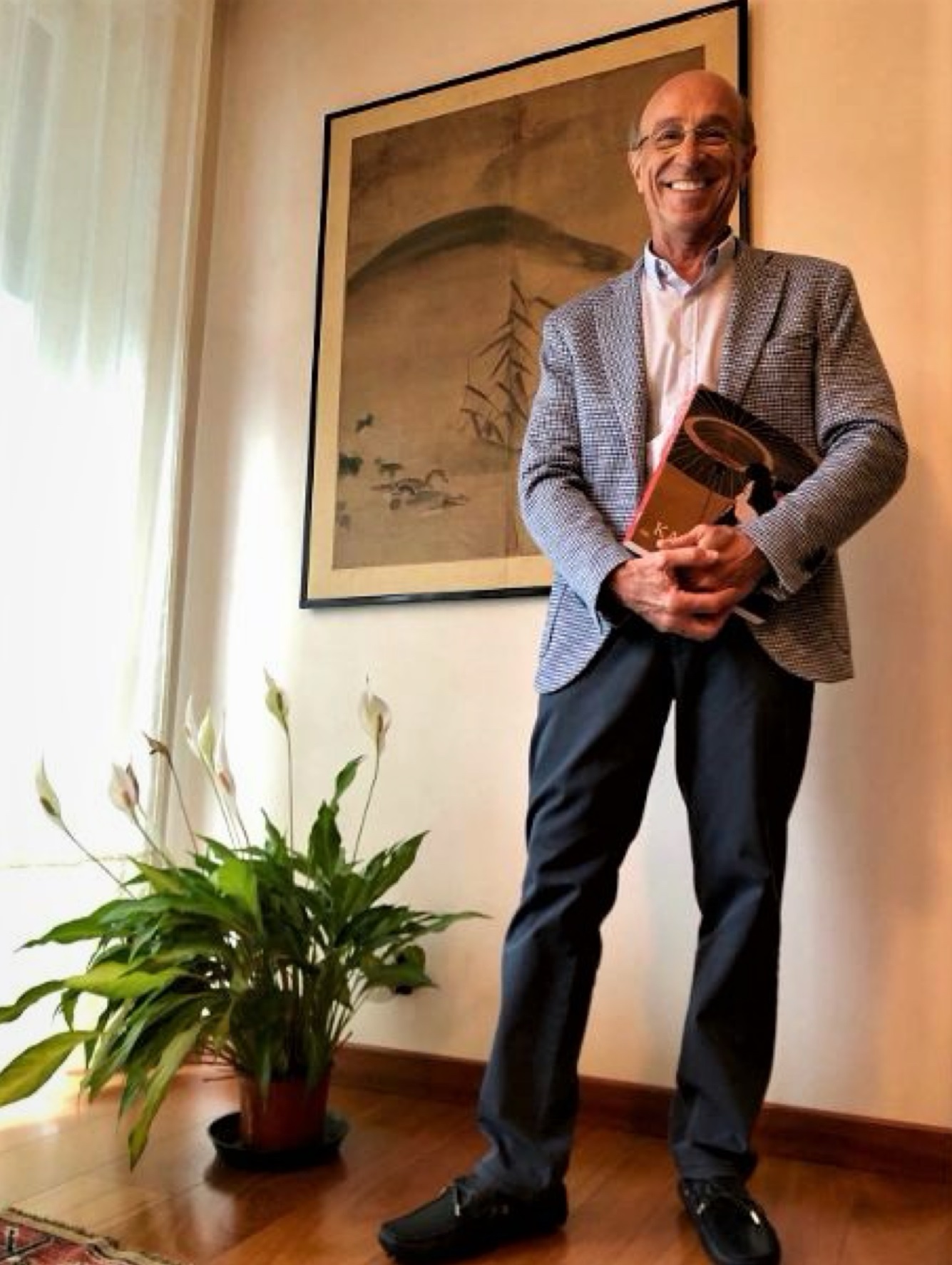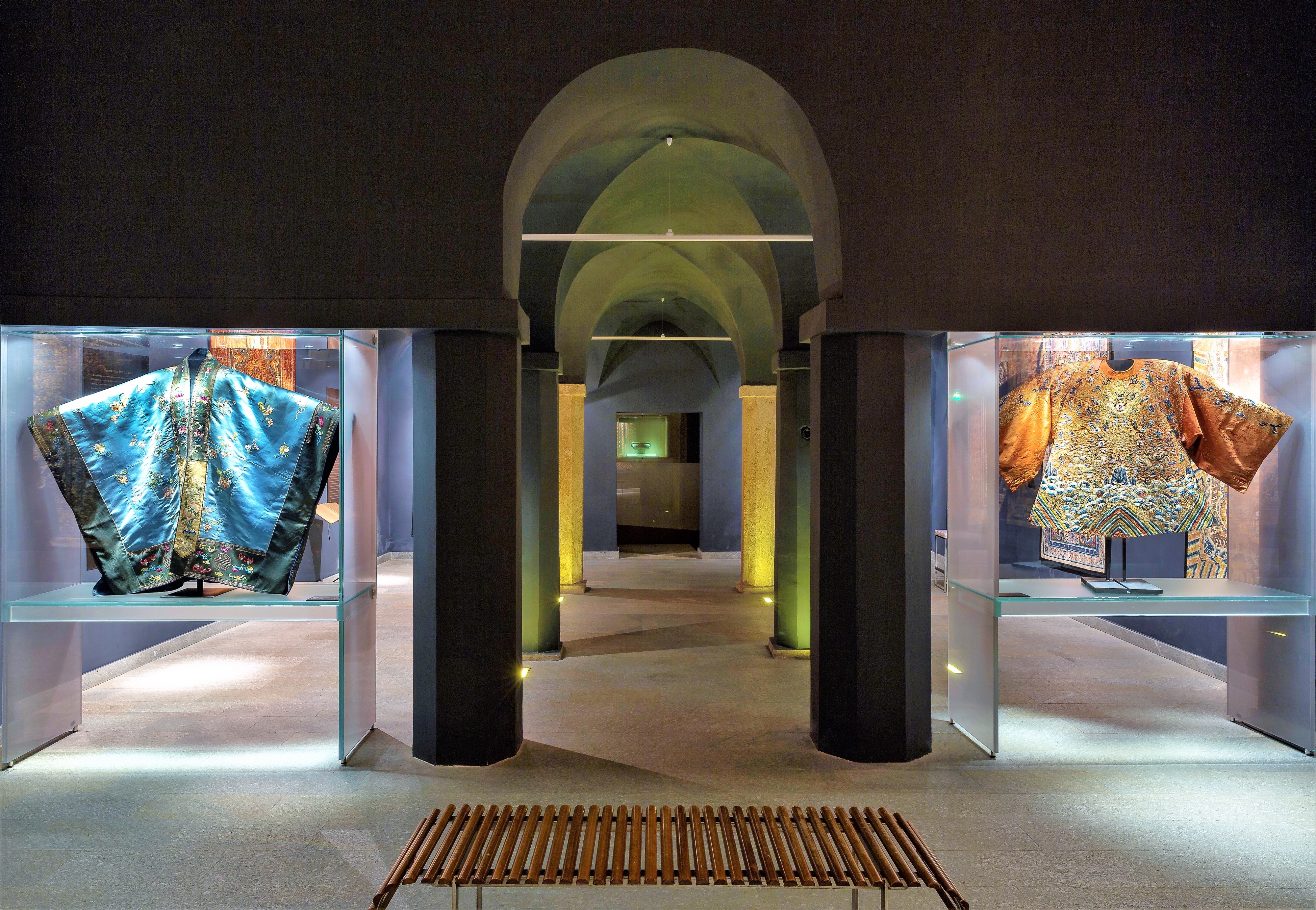

26/03/2025 General News, Latest News
Sitting in Dr Claudio Perino’s living room in Turin I was overwhelmed with the impression of how much his collection is part of his family’s daily life. Rather than being tucked away in storage, the objects he amassed over the past two decades surrounded us from all angles. The exquisite paintings seemed to have been chosen with the time period, aesthetical sense and theme all taken into a careful consideration. As a medical professional he was not academically trained in art and history, so the the questions which naturally arose in my head were: how did he arrive at the place of owning this curated selection of museum-worthy artworks? And why would he want to sell them? His short statement answered them both:

Dr Claudio Perino at his home in Turin.
More questions formed while I catalogued the artworks in preparation for the sale, and before part of Dr Perino’s collection is offered on March 31st, he kindly agreed to give us something that the silent artwork will not: his voice and perspective on one collector’s journey.
1. What were your first impressions of Japanese art and what first motivated you to start buying?
My interest and passion for Japanese art and culture started when I began reading literary works by Authors such as Tanizaki, Akutagawa, Kawabata, Saikaku and Soseki. I was captured by the descriptions in their novels and essays. Then I began studying religion, myths and legends, history and poetry.
Lot 33 - A group of nine woodblock prints on Japanese paper by Ando Hiroshige (1797 — 1858), Keisai Eisen (1790 – 1848), Edo period, 19th century.
In the early 1990s it was difficult to find Japanese art (excluding woodblock prints) in Italy (there was only one dedicated dealer, based in Venice), so I started to partecipate to auctions held in the UK, France and Germany. And I was fascinated by the quality of lacquerware and prints.
2. How did your collecting tastes evolve along the process?
I started to buy illustrated books; my first purchase was a rather worn volume from the Manga of Hokusai. Next I began collecting inros and lacquerware, with woodblock prints which I could more easily find from Italian dealers. During the years I was also able to collect Kesa (monks’ ceremonial robes), antique and modern pottery, and a few bronze objects. I have been looking for beauty and quality, even if sometimes the works of art needed professional restoration, and it was not easy to find this kind of specialists in my country.
Lot 4 - A Chinese Parcel-Gilt Bronze Figure of a Tiger, Possibly Tang Dynasty
3. Were the linguistic and cultural differences a deterrent or a motivation for research?
I was lucky to be fluent in English. Japanese was totally “incognito”, but I was able to find plenty of information in English, pursuing all kinds of books and essays. I also started to visit Museums and Exhibitions in Italy and abroad during my frequent business trips. Gradually I also became involved in studying Chinese history, art and culture.
4. Have you bought much directly in Japan? Access to prime pieces must be complicated for a gaikokujin[1], have you used the help of local advisers?
Mostly I was self sufficient, and helped by my network of local dealers and some collectors. In the early 2000s I started buying online directly in Japan and the USA and learning in the process. At this time, I also started buying paintings, original drawings and a few byobu (screens).
5 In another interview you mentioned the kura[2] storage and the ubu[3] artworks, can you shed some light on your most exciting acquisitions from these family treasure troves?
Most of the art treasures coming out of the kura are paintings and pottery (eg Nabeshima and Raku). Surprisingly however, many Chinese and Korean works of art were also collected and kept as family treasures for generations. Many of the outstanding pieces in this auction sale came out of kura in the Kyoto and Osaka area. Trusted local dealers have been very helpful acting as intermediary, and so I was able to work from home without travelling to Japan.
Lot 8 - A Chinese Qingbai Wine Pot and Cover, Song Dynasty, 10th-13th century
6. The collection was featured in 3 exhibitions: Il Drago e il Fiore D'Oro in MAO (Museo d'Arte Orientale, Turin) Kakemono in MAO and in Lugano, and permanent exhibition in MAO. At what point was the idea of exhibiting your collection born, and how was your experience working with museums?
In 2006 I proposed to loan a large selection of Japanese works of art to the MAO in my home city Torino, and the offer was accepted.

Lots 1 and 2 from The Perino Collection on display at the MAO in Turin
Working with public museums is not a simple matter, it takes a lot of time and discussion. However challenging it may be, it is worth every step of the effort. It is the only means to share and show to a large audience the beauty of Japanese art and educate the new generations of art lovers. Additionally, it is a great way to work with experienced curators and art historians.
7. At least 3 painters featured in The Perino Collection have been Buddhist brothers: Rosetsu, Jakuchu and Hoitsu. This gave an additional philosophical dimension to their works, was this a factor in your collecting choices, and are you interested in these aspects of their paintings?
Indeed, most of the painters- including the ones mentioned- have a sort of Buddhist background. At the height of their careers, they were sometimes given the honorary titles of Hōgen[4] or Hokkyō, which elevates creating and experiencing art to a level of transcendental experience. The buddhist teachings permeated all aspects of Japanese life and culture, especially until the end of the Edo period. However, we should remember the complex syncretism with Shinto, Confucianism and even Taoism, that can be traced in most of the kakemono themes and subjects.
8. Are the Chinese and Korean items in the collection a separate passion, or intended to function as an interesting comparison to the Japanese pieces?
In the collection the “continental pieces” are a necessary complement to Japanese works of art. The Japanese have always looked west to China and Korea, as a source of inspiration during the ages.
The first can be considered the motherland, the second acting as intermediary in the transmission of ideas, cultural novelty and material inspiration. Of course, Japan has always adapted and modified the flow coming from continental Asia.
Lot 16 - A Chinese and a Korean Glazed Pottery Water Dropper, early 20th century
9. Which is your favourite piece in this auction and why?
My favourite piece is the Jakuchu painting of the seven cranes. Seven is a lucky number, as it is applied to the Gods of Good Fortune in the Japanese tradition and to the sages of the bamboo grove in the Chinese tradition. The group of cranes is almost like a living sculpture, where they all melt into a unity, suspended on only seven legs. It is interesting also that in the signature the painter defines himself as a “citizen of Kyoto”.
Lot 38 - Itō Jakuchū (1716 — 1800), Seven Cranes, Edo period, circa 1755.
10. What would be your advice for an aspiring collector?
First of all: study, study, study. Secondly, train your eye on real objects (not only pictures) as much as possible. Ideally, handle and feel real objects- although this can be tricky, if you don’t work for a gallery, an auction house or a museum. Thirdly, collecting through the web is now an opportunity, but it requires knowledge, good eyes and… taking a bit of a risk.
The sixty-seven lots form the collection of Dr Claudio Perino are available for viewing at Azca Auction’s saleroom at 188R Hammersmith Road, London. The firm’s door remains open on the weekend proceeding the auction, on the 29th and 30th of March, between 11-4pm.
If you have enquiries regarding the sale, which is taking place on March 31st, reach out to Asian Art Specialist Marta Somauroo at marta@azcaauctions.com
[1] Japanese for 'foreigner'
[2] A traditional fire and earthquake-proof storehouse built separately and away from the main house, for safekeeping of valuables and family heirlooms.
[3] Lit. 'newborn’- refers to an object never seen on to the market before
[4] From the 11th century onwards, the Japanese court awarded artists excelling in their craft titles traditionally reserved for buddhist monks: the highest, Hōin, lit. 'Eye of the Law', second highest, Hōgen, lit. 'Seal of the Law' and third highest, Hokkyō, lit. 'Bridge of the Law'. The 'Law’ understood as the Buddhist teachings.